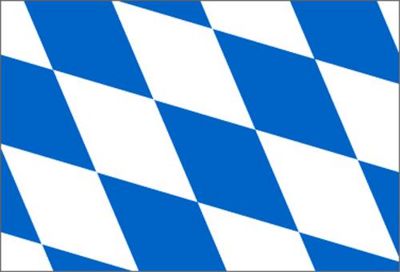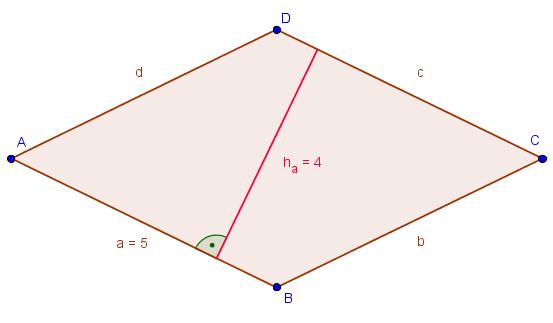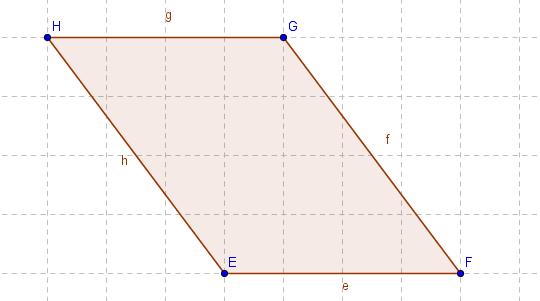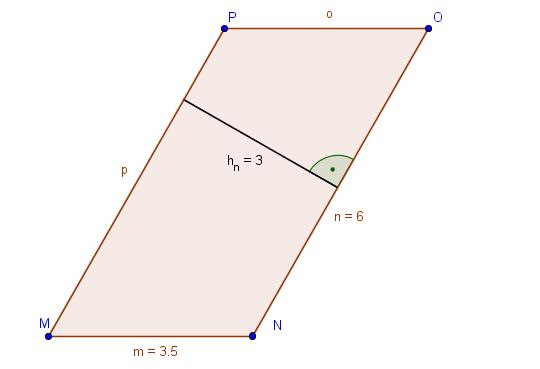Übungen: Unterschied zwischen den Versionen
Aus RMG-Wiki
< Lernpfad Flächenberechnung/Inhaltsverzeichnis | Parallelogramm | Flächenberechnung | Hefteintrag
| Zeile 67: | Zeile 67: | ||
| width="50%" style="vertical-align:top" | | | width="50%" style="vertical-align:top" | | ||
| + | <big>Übung 1:</big> | ||
| + | |||
{{Lösung versteckt| | {{Lösung versteckt| | ||
<big>A<math>=</math>a<math>\cdot</math>h<sub>a</sub><math>=</math>5 cm <math>\cdot</math>4 cm<math>=</math>20 cm²</big> | <big>A<math>=</math>a<math>\cdot</math>h<sub>a</sub><math>=</math>5 cm <math>\cdot</math>4 cm<math>=</math>20 cm²</big> | ||
| Zeile 81: | Zeile 83: | ||
| width="50%" style="vertical-align:top" | | | width="50%" style="vertical-align:top" | | ||
| + | <big>Übung 2:</big> | ||
| + | |||
{{Lösung versteckt| | {{Lösung versteckt| | ||
<big>A<math>=</math>e<math>\cdot</math>h<sub>e</sub><math>=</math>4 cm <math>\cdot</math>4 cm<math>=</math>16 cm²</big> | <big>A<math>=</math>e<math>\cdot</math>h<sub>e</sub><math>=</math>4 cm <math>\cdot</math>4 cm<math>=</math>16 cm²</big> | ||
| Zeile 95: | Zeile 99: | ||
| width="50%" style="vertical-align:top" | | | width="50%" style="vertical-align:top" | | ||
| + | <big>Übung 3:</big> | ||
| + | |||
{{Lösung versteckt| | {{Lösung versteckt| | ||
<big>A<math>=</math>n<math>\cdot</math>h<sub>n</sub><math>=</math>6 cm <math>\cdot</math>3 cm<math>=</math>18 cm²</big> | <big>A<math>=</math>n<math>\cdot</math>h<sub>n</sub><math>=</math>6 cm <math>\cdot</math>3 cm<math>=</math>18 cm²</big> | ||
Version vom 26. September 2010, 22:37 Uhr
|
|
Hier siehst du eine Sonderform des Parallelogramms.
Was fällt dir auf?
- Alle vier Seiten sind gleich lang.
Verschiebe die Raute so, dass du eine Figur mit vier rechten Winkeln erhälst.
- Es entsteht ein Quadrat.
Ich erkenne:
- Die Raute ist ein verschobenes Quadrat.
Eigenschaften:
- Alle vier Seiten sind gleich lang.
- Die Diagonalen e / f stehen aufander senkrecht und halbieren sich.
Überlege und Begründe
Eine Raute hat wie ein Quadrat vier gleich lange Seiten. Hat sie auch den selben Flächeninhalt wie ein Quadrat?
Hilfe:
- Verschiebe den Punkt A und C und beobachte. Was passiert mit dem Flächeninhalt?
Lösung:
- Der Flächeninhalt der Raute ist kleiner als der Flächeninhalt des Quadrats, weil die Höhe abnimmmt.
Arbeitsauftrag:
- Berechne die Flächeninhalte der Parallelogramme.
- Kontrolliere deine Ergebnisse mit den Ergebnissen auf der Seite.
- 1 Kästchen = 1 cm
- Anmerkung: AParallelogramm = Grundlinie
 HöheGrundlinie
HöheGrundlinie
|
Übung 1:
A |
|
Übung 2:
A |
|
Übung 3:
A |
Hier geht's weiter!


 a
a


